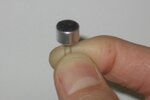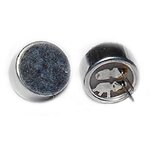easy electronics
Member level 3
I need HELP to make a low noise amplifier circuit to amplify MIC signal.
i want to amplify mic signal and give them to speaker .
MIC --> LOW NOISE AMPLIFIER -->> SPEAKERS.
i have tried lm386 but it gives too much noise .
i want to amplify mic signal and give them to speaker .
MIC --> LOW NOISE AMPLIFIER -->> SPEAKERS.
i have tried lm386 but it gives too much noise .




